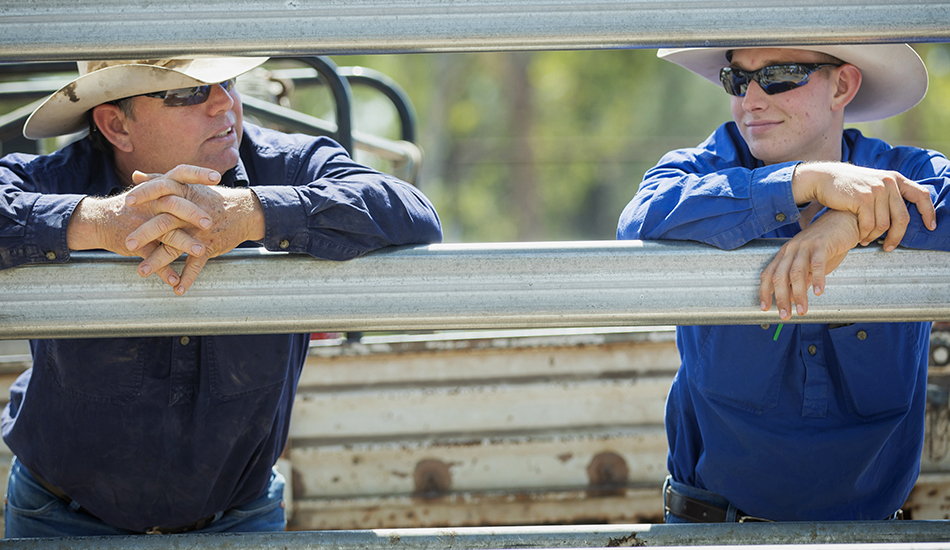
Demonstration sites help to bolster business viability
LDC has partnered with Meat & Livestock Australia (MLA) to develop two Producer Demonstration Sites (PDS) to improve business productivity and profitability outcomes.
LDC has been successful in securing funding from MLA to establish two Producer Demonstrations Sites (PDS).
MLA partners with producer groups to achieve improved business productivity and profitability outcomes.
Joint LDC-MLA PDS will focus on:
- regenerative grazing practices (a five-year project); and
- an integrated approach to weed control (a three-year project).
Collinsville Region Regenerative
Grazier Network
Strathalbyn Station grazier Bristow Hughes
Chair: Bristow Hughes
The Collinsville Region Regenerative Grazier Network includes four BBB properties.
This network of regenerative graziers manages more than 680,000ha of grazing country and runs about 70,000 breeders.
The network will test regenerative grazing practices across a wide range of environments and commercial scales, and will demonstrate how livestock can improve soil biology, and stimulate production of quality pasture through livestock impacts while improving herd performance.
Regenerative grazing practices will feature mobbing-up of cattle, planned grazing based on matching stock numbers to carrying capacity (forage production), high-density short duration grazes with long pasture recovery periods, and retaining suitable ground cover at the end of the dry season.
The practices require an integrated approach and all facets of the enterprise are equally important.
The project will provide critical herd performance, pasture management and soil health data for the increasing number of graziers undertaking regenerative grazing practices in the Bowen and Collinsville areas.
The network will conduct a series of field events and other extension activities throughout the five-year project to showcase the demonstration site results.
Integrated catchment-wide priority
weed management group
Glenalpine Station grazier Barry O’Sullivan and son Wayde
Chair: Barry O’Sullivan
The Integrated catchment-wide priority weed management group includes six BBB properties.
The weed management group will implement a new, co-operative and integrated approach to identifying the best practice management of the highest priority economic weeds in the catchment.
Identified priority weeds:
- Lantana (Lantana camara)
- Rubber vine (Cryptostegia grandiflora)
- Prickly acacia (Vachellia nilotica)
- Belly ache bush (Jatropha gossypifolia)
- Chinee apple (Ziziphus mauritiana)
The properties will tackle the weeds of most importance to their area, exploring and, where practical, implementing a suite of options, including biological, mechanical and chemical controls, combined with grazing best practices.
The properties will measure and compare:
- relative costs of previous control and maintenance measures with the new practices;
- the areas of weeds treated and the comparative success rates for the new practices; and
- the number of new cooperative actions with neighbours and other land managers.
The PDS will conduct a series of field events and other extension activities throughout the three-year project to showcase the demonstration site results.


